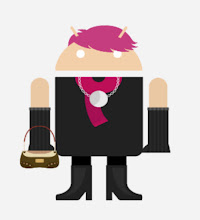Tatau is the name of artwork originating in the Pacific Islands, over 3,000 years ago, and discovered when early explorers, enamored with their beauty, collected it from places like Tahiti and New Zealand. This artwork grew in interest, continued to spread around the world, especially with seafaring explorers. Over time, the word tatau turned into "tattoo".
If you are anything like me, what you knew about tattoos growing up was limited. I thought that sailors got them (loud people, using foul language) in tattoo parlors (dark, unsanitary, questionable places). The only people I ever knew with tattoos were in the military, or they were folks that I didn't really hang out with. I never understood the appeal of a tattoo and never wanted one-- Ever. I couldn't think of any image to put onto my body that would stay there. Forever. Until I die. What could I commit to that wouldn't eventually fall out of fashion with me, or move on from being super important after a few years? Or a few decades?
My family feels the same. Also, you should know, that my family is also considered very proper. Growing up in the American South, we'd go to church every Sunday, help the elderly woman next door change her lightbulbs and take out her trash. We never wore white after Labor Day, but always wore gloves and pearls to match our Sunday outfit. We were sure to get good grades, land the right job, stay out of trouble. We did what is expected. We did not get tattoos. My brother's friend got a tattoo when he was in the army, but he regretted it when he came home and sobered up, so all was forgiven.
Fast forward from the 90's to 2020. Things have changed. The world has changed. I have changed. Perceptions of tattoos have changed. And yet my ideas about getting them have not. I still can't think of a single image or saying so important to me that I want it permanently set into my skin, either viewable or hidden to others. By now, I've given it plenty of thought. I've talked with friends. Considered it seriously, on more than one occasion, and still -- nope.
Until I see tattoos from New Zealand. I'm stunned into silence at how beautiful they are. I've never seen anything like it. Instead of some bounded image, first seen flat, on a wall or in a book, then copied onto the skin in different colors that fade, Maori have their own art form, blending ink and canvas, freeform in a symbiotic relationship where the skin, stretching over bone and muscle in constant motion making curves and folds, hold personalized and familial symbols unique to the wearer, linking them to their culture. These symbols are known collectively in the community, familiar, inked by someone who crafts their own tools and delivers markings as part of a ceremony. The art is an act, embodied, an expression of a community - collectively and individually.
I learned all I could, in the way I knew how. The internet. (Although, i wish I cold have traveled to New Zealand in person.) As I looked around, I learned more. I learned about Ta Moko and its cultural significance, and how every symbol has a meaning. In some cases, the community leader would choose symbols for the person, and there are unique symbols for each community or family. It's an important expression of Maori culture, and people get upset when non-Maori take it and copy it. It's insulting, and considered cultural appropriation.
My heart sank. I found something beautiful, and it was off limits. With more reading, and more research, it turns out that Ta Moko is sacred, only for Maori, but kirithuhi was created for people like me, a collection of symbols that can be used by those who appreciate the art but aren't Maori. Relieved, the only thing left was to find an artist who knew the difference, so I could feel comfortable with whatever I might want to get.
By now, I've changed my mind about the whole tattoo thing. Now... now I want a tattoo. I TOTALLY want something that I wear, but isn't clothing, conforms to the unique shape of my own body, and expresses who I am. I couldn't sign up fast enough. Of course, my family is taking longer to win over. My mother comments "A tattoo?! Why on earth would you want a tattoo?" The same way someone might ask ,"Why would you want an extra horn growing out of your head?" Remember. Sailors. Unsavory people. Not our family. It isn't proper.
Afterwards, I sent pictures of my new body art to family members. My brother is stunned into silence, and only when prompted does he respond with "Well, I guess, if that's what you want. OK." My mom is more understanding. She gets it. "It's so beautiful! It's not a tattoo. It's art."


